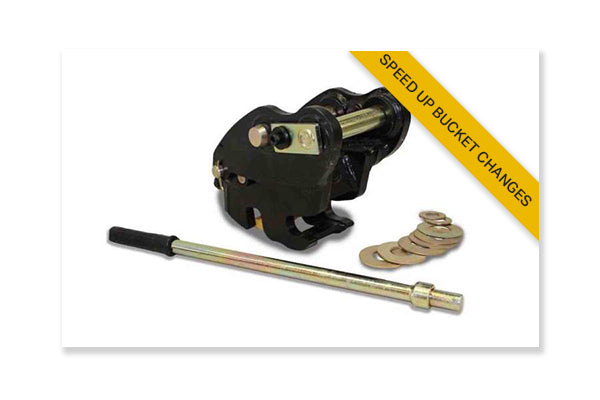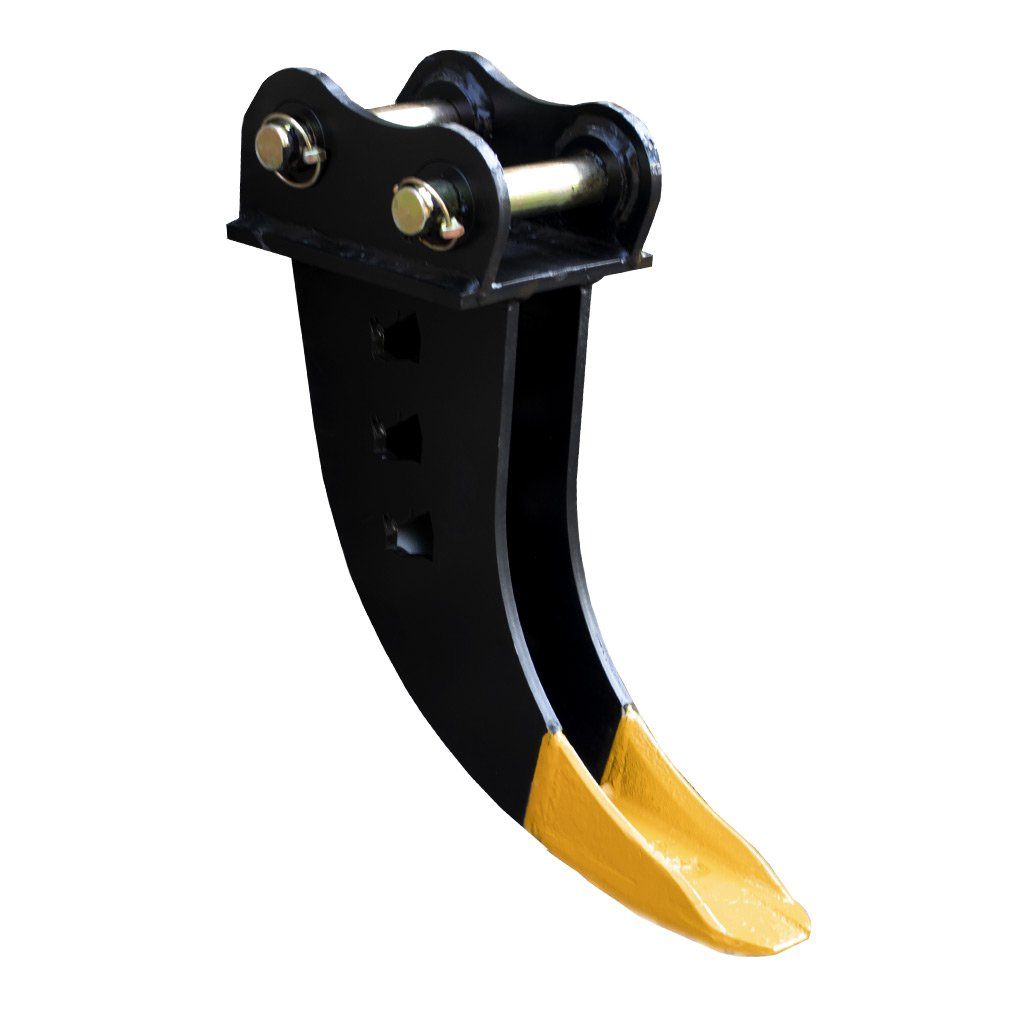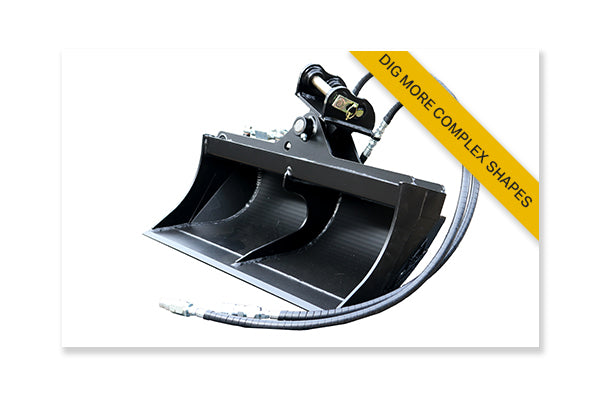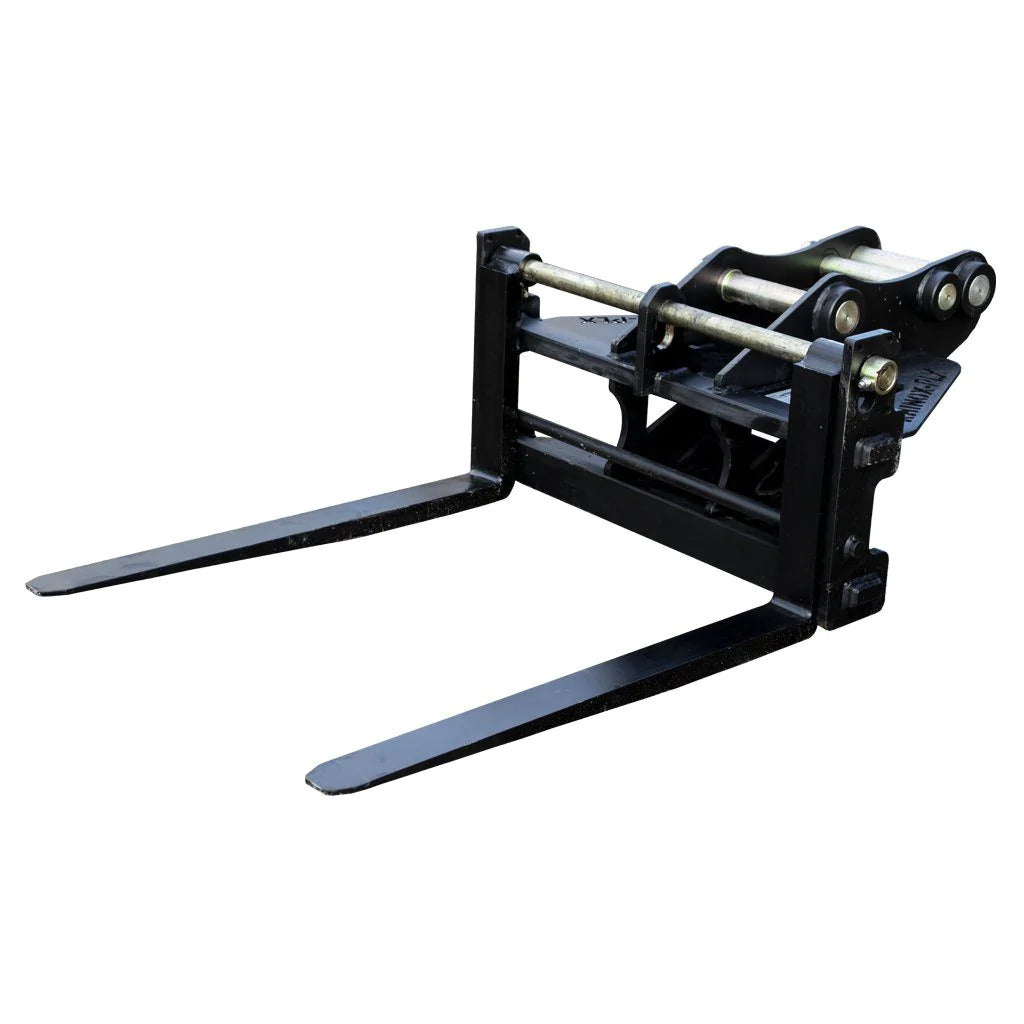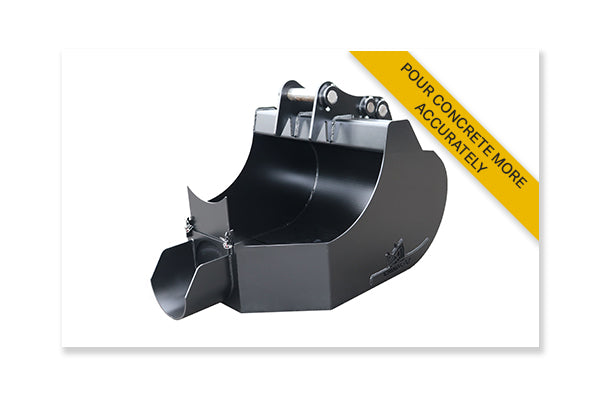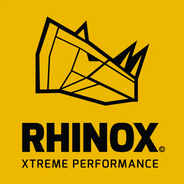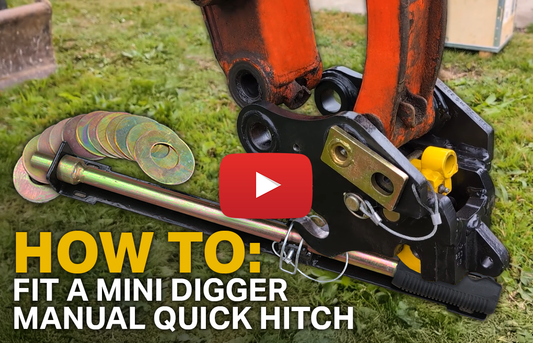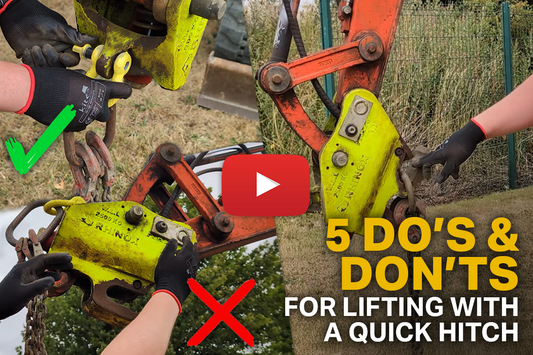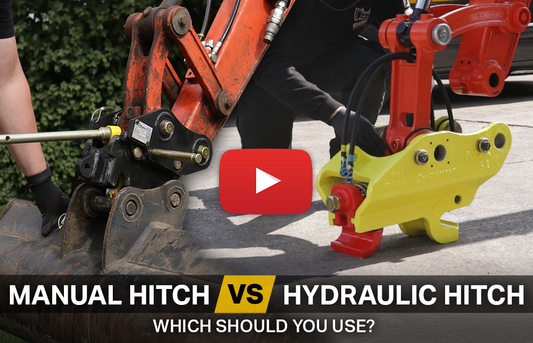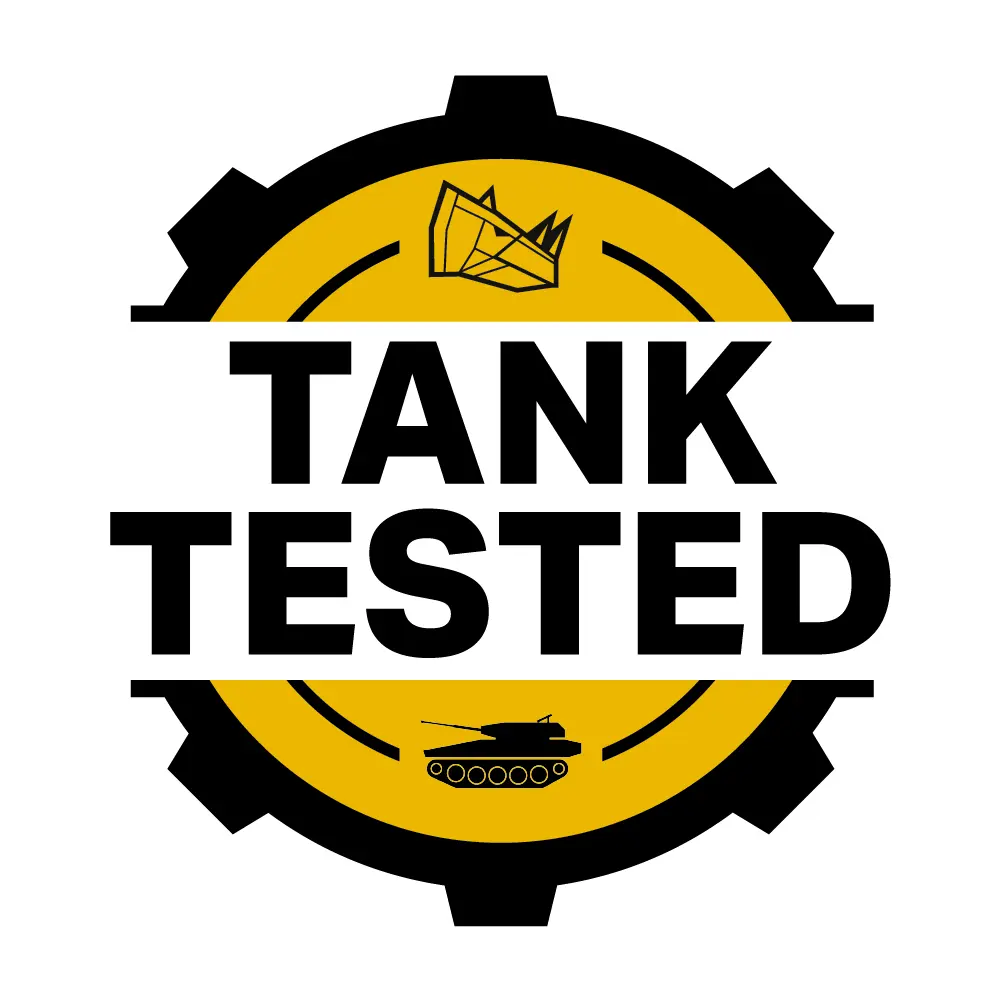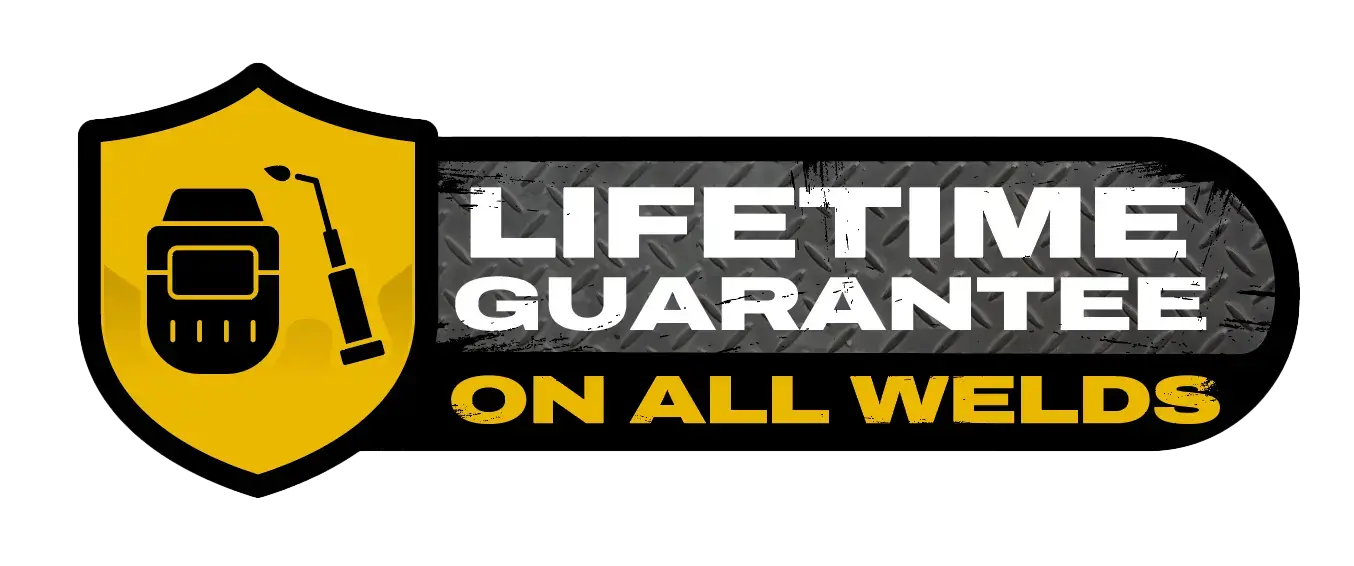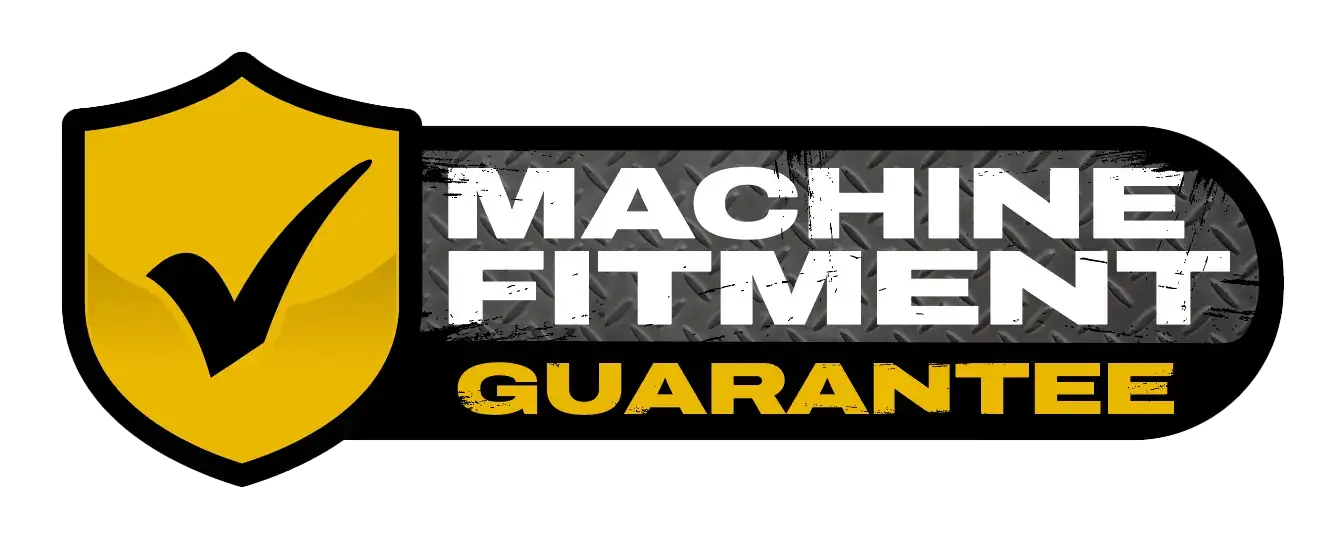
Quick Hitches: Cast Steel VS Welded Steel
When purchasing an excavator quick hitch, a key consideration that should influence your decision is the material and manufacturing method of your quick hitch. Either, cast steel or welded steel components. Quick hitch manufacturers typically use one of these two methods, so understanding their differences can help you choose the best option for your digger. Each manufacturing method offers unique benefits and drawbacks, which affect durability, cost and machine adaptability. This guide will outline the advantages and limitations of both cast steel and fabricated steel quick hitches, clarifying how each method impacts performance. With this information, you’ll be equipped to make an informed choice that maximises your excavator's performance and longevity.
Understanding Steel Casting for Quick Hitches
What are Cast Steel Quick Hitches?
Cast steel quick hitches are produced through a steel casting process, where molten steel is poured into a mould, often made of sand to allow for precise detail replication. As the steel cools and solidifies within the mould, it forms a single, continuous piece. This process allows for complex shapes to be created, adding intricate details like logos and specific branding. During casting, various elements, such as chromium or molybdenum, can be added to the steel to increase its hardness and wear resistance. Once the tooling is created, the casting process can be highly efficient, allowing for large-scale production with lower per-unit costs over time.

Cast Steel Manufacturing Process
1. Mould Creation
The steel casting process begins by creating a mould that replicates the desired shape of the quick hitch frame. To achieve this, a 'form' of the quick hitch, machined from a solid billet of steel, is pressed into a bed of sand, creating an indentation that precisely mirrors the hitch’s design. Sand is commonly used for mould creation because it is highly adaptable and can capture fine details, allowing for an accurate, intricate impression. Once the 'form' is carefully removed, the cavity left in the sand creates the mould that will shape the molten steel into the quick hitch.

2. Molten Steel Pouring
After the mould is prepared, steel is heated to extreme temperatures, typically over 1,400°C (2,552°F), until it reaches a fully liquefied state. This molten steel is then carefully poured into the mould, allowing it to flow and fill every section of the cavity. As the molten steel fills the mould, it captures the intricate details of the mould’s shape, allowing for complex designs and branded details to be embedded directly into the steel.
3. Cooling and Solidification
Once the mould is filled, the molten steel begins to cool and solidify, taking on the precise shape of the mould cavity. During cooling, the steel undergoes a transformation from a liquid to a solid state, forming a single, continuous piece of metal. This solidification process is critical for achieving the strength and durability that cast steel is known for. By cooling within the mould, the steel maintains its complex shape and forms a robust, seamless structure that enhances the quick hitch’s strength and longevity.

4. Quality Control
After the cast steel quick hitch frame is removed from the mould, it undergoes a series of stringent quality control checks to ensure it meets required specifications. Inspections often include ultrasound testing and X-ray radiography to detect any internal imperfections, such as cracks or voids. Each frame is also visually inspected and measured to confirm that it meets the exact design specifications, ensuring it will fit seamlessly with additional components and operate safely under stress.
5. Finishing Touches
In the final stages, Rhinox quick hitches are heat-treated to further harden the steel. The cast steel quick hitch frame then undergoes machining to add the necessary fittings and attachment points required to complete the coupler. Before the final assembly, the frame is painted. Following the painting process, the frame is fitted with all additional components, such as springs, bosses and cast steel latches.
Examples of Steel Casting & Metal Foundry: |
Understanding Fabricated Steel Quick Hitches
What are Fabricated Steel Quick Hitches?
Fabricated, or welded, steel quick hitches are made by cutting and shaping individual steel components, which are then welded together to form the final quick coupler structure. Fabrication involves more manual processes, including cutting, bending and welding steel pieces, allowing for greater customisation. Fabrication allows manufacturers to easily adjust frame dimensions and configurations, making it ideal for custom or unique quick hitches, especially in small-batch production or highly specialised designs for mix & match hitches.
Fabricated / Welded Manufacturing Process

1. Material Cutting and Shaping
This stage involves selecting steel sheets or bars, which are then cut, bent and shaped according to the specific design requirements for the quick hitch. Precision cutting tools, such as CNC plasma or laser cutters, are often used to achieve accurate dimensions and clean edges. After cutting, the steel pieces may go through bending machines or shaping tools to create curves or angles that match the hitch’s design specifications.
2. Welding of Components
Once the steel components are cut and shaped, they are positioned and welded together to form the final structure of the quick hitch. The welding process must be precise, as weak or uneven welds could compromise the quick hitch’s performance and safety. Depending on the design, different welding techniques (such as MIG, TIG or robotic welding) might be used to suit specific material thicknesses and design requirements.
3. Inspection and Testing
After the welding process is complete, the welded quick hitch frame goes through a inspection and testing phase to confirm it meets all structural and functional requirements. This inspection includes a combination of visual checks to identify any visible defects, such as cracks, misalignments or incomplete welds, as well as precise measurements to verify dimensional accuracy. These thorough inspection processes ensure the welded quick hitch can withstand heavy loads and meet safety and quality standards before it is approved for use.
Examples of Steel Fabrication: |
Pros & Cons: Cast Steel VS Fabricated Steel Hitches
Strength & Durability

Cast steel frames are renowned for their structural strength and durability, because they are often enhanced with additional elements like chromium or molybdenum, creating a stronger compound that’s more wear-resistant than the standard solid steel used in fabricated hitches. As a result, even when made from similar grades of steel, cast steel hitches tend to be more durable than fabricated quick hitches, wearing down more slowly and delivering more consistent performance over time. Additionally, cast steel hitch designs follow natural load paths and are free of welded seams, reducing stress concentration on potential weak points. Without these joints, the frame has a smooth, continuous surface that reduces stress concentrations, lowering the risk of cracks forming, especially in high-stress areas. In the rare event of failure, a fabricated steel hitch is more likely to bend, whereas a cast steel frame is more prone to snapping due to differences in their molecular structures.
Design Flexibility & Customisation
Cast steel hitches offer the advantage of being able to create complex geometries and intricate features, like logos, that would be difficult or impossible to fabricate from steel plates for welded hitches. The quick hitch castings can also be made lighter, as material is only added where necessary. This means wall thickness can vary and weight-reduction pockets or cavities can be incorporated where possible to keep the hitch weight to a minimum. This flexibility allows for more efficient material use and a reduced weight compared to fabricated designs, which are restricted by the weight of the standard plate thicknesses. However, cast steel hitches are far less adaptable for small or one-off modifications. For a custom cast hitch, a new mould must be designed and produced, which is a process that involves complex steps like prototyping, precise tolerance checks and mould adjustments to ensure the final product meets specifications. Most hitch manufacturers avoid this customisation for small or single orders due to the high costs of re-moulding. These high costs would drive up the price of the cast steel hitch, making it impractical for small batch or individual orders.
Fabricated quick hitches are often heavier due to the limitations of standard stock thicknesses of the steel components. Reducing the plate weights would require extensive machining before assembly, adding cost and complexity to the manufacturing process. Complex shapes or curved features are particularly difficult to produce for welded hitches, which often results in multiple plates welded together, adding labour and alignment challenges. However, fabricated steel quick hitches offer more flexibility for customisation and modifications, making them ideal for customers who require specific adjustments or custom dimensions, such as for a mix and match quick hitch. Since fabricated hitches are made from individual parts that are welded together, each component can be adjusted or re-sized before final assembly, allowing manufacturers to accommodate custom orders without significant changes to their production workflow. So, if you're looking for a custom or mix and match quick coupler, a fabricated quick hitch might be the better option for you!

Maintenance Requirements
Both types of quick hitch require servicing and maintenance to ensure they perform smoothly. Welded frames require more regular inspection and maintenance, particularly if used in rugged environments as cracks and fractures could develop along the welds. In the event of component or weld joint fails, it's generally easier to repair or replace individual sections of the welded frame without replacing the entire hitch. Without welds, there are fewer spots that might require inspection or repair on a cast steel hitch, leading to potentially lower maintenance costs. Although, if the cast frame cracks or fails, repair options are limited and will likely result in needing a replacement instead.
Cost & Production Time
Cast steel quick hitches come with higher upfront costs, as manufacturers must design and produce unique prototypes and moulds for each hitch style. This initial stage involves careful planning and precise mould-making to ensure the final casted product meets all specified dimensions and tolerances. However, once these moulds are created and the design is approved, cast steel hitches become significantly cheaper and faster to mass-produce. The moulds can be reused repeatedly, allowing manufacturers to produce large quantities with high efficiency, drastically reducing production time and cost per unit. Lower production costs allow your manufacturer to keep prices lower for you, as the customer. But as previously mentioned, steel casted hitches are susceptible to internal flaws such as porosity and shrinkage cavities which require intensive quality control measures, such as x-ray and ultrasound testing, to ensure optimal quality.
In contrast, fabricated steel quick hitches require individual assembly and welding for each hitch produced, as they lack the reusable mould system of steel casting. Components can be cut and shaped in bulk, making the stock plates readily available. However, each hitch must still be manually welded, by a skilled welder, which is a labour-intensive process that increases production time for every unit. The nature of welding introduces a high risk of imperfections, such as misalignment or minor variations, meaning welded hitches must be thoroughly inspected and tested for alignment issues or dimensional inconsistencies. Required repairs are usually simple to rectify due to the flexibility of the manufacturing technique.
Feature |
Cast Steel Quick Hitch |
Fabricated Steel Quick Hitch |
| Structural Strength & Durability | Fewer stress points. Cast steel is highly fatigue-resistant. | Welds are more likely to fatigue & fail. Requires thicker plates or reinforcement in weak areas. |
| Quality Assurance | Advanced NDT techniques (UT, X-ray, MT) ensure internal and external quality. | Weld quality and material consistency rely on skilled labour and visual inspections. |
| Production Efficiency | Initial lead time is longer due to mould creation. Overtime lead time is likely to be lower, as manufacturers can bulk produce more efficiently. | Lead time is likely to be higher, due to the extended duration required for individual hitch welding, but fabrication is more straightforward which will have an influence on lead time. |
| Design Complexity | Excellent for complex, intricate shapes with varied wall thicknesses. | Limited to simpler geometries. Struggles with intricate or curved shapes. |
| Weight Optimisations | Allows tailored material distribution, varying wall thickness and weight-reduction pockets. | Limited to stock plate thickness. Requires machining for weight savings, adding cost. |
| Customisation Ability | Customisable options unavailable as moulds are premade by the manufacturer. | Likely to be able to customise as components can be altered to meet customer requirements. |
Which Type of Excavator Quick Hitch is Best?
The choice between cast steel and fabricated quick hitches largely depends on your requirements. Cast steel quick hitches are known for their high structural integrity and durability, as they lack welded seams that would create stress points. They perform well under heavy loads, wearing slowly and more consistently over time. However, cast hitches are expensive to customise due to the need for unique moulds and prototyping, making them best suited for high-volume production. On the other hand, fabricated steel hitches allow for easier customisation and adjustments during production, making them a better choice for specific, one-off orders or customised dimensions. In terms of maintenance, fabricated hitches may require more frequent inspection as weld joints are more susceptible to cracking under stress, though repairs are often simpler than on a cast frame. Cast steel hitches, by contrast, tend to have lower maintenance needs, though any cracks in the cast structure can be challenging to repair. Finally, while cast hitches have higher initial costs and preparation time, their reusable moulds make them cheaper to mass-produce, whereas fabricated hitches require labour-intensive welding for each unit, potentially increasing production time and costs on larger orders.
About Rhinox's Excavator Quick Hitches
Rhinox offers an extensive range of manual quick hitches and hydraulic quick couplers designed for mini diggers ranging from 0.75 to 9 tons. Our range of hydraulic quick hitch are crafted from high-quality cast steel, including key components such as the main quick hitch body and the traveling latch. Every Rhinox hydraulic quick coupler is also heat-treated to further strengthen the steel hardness, making our hitches more durable and significantly extending their lifespan. Rhinox manual quick hitches combine a fabricated steel frame with a cast steel latch, designed to minimise wear and tear during mounting and ensure long-lasting performance over time. You can explore our full range of quick hitches below, or reach out to our team - who are always ready to assist with any questions or help you find the perfect hitch for your equipment.
Shop Rhinox Manual Quick Hitches for 0.75 to 4 ton Mini Diggers. |
Shop Rhinox Hydraulic Quick Couplers for 1.5 to 9 ton Excavators. |
Learn more with Rhinox:
 |
 |
 |

